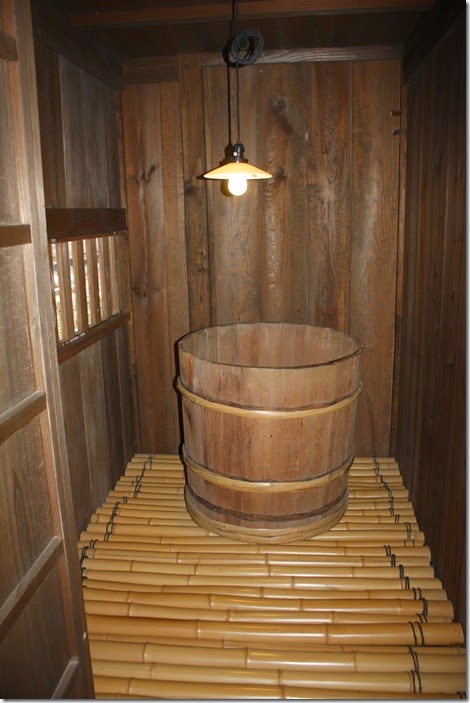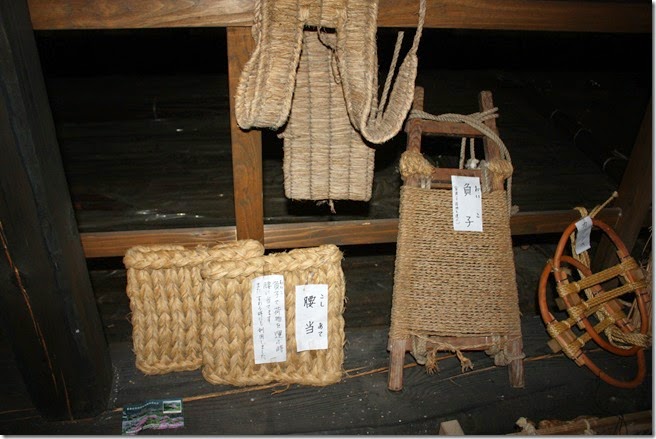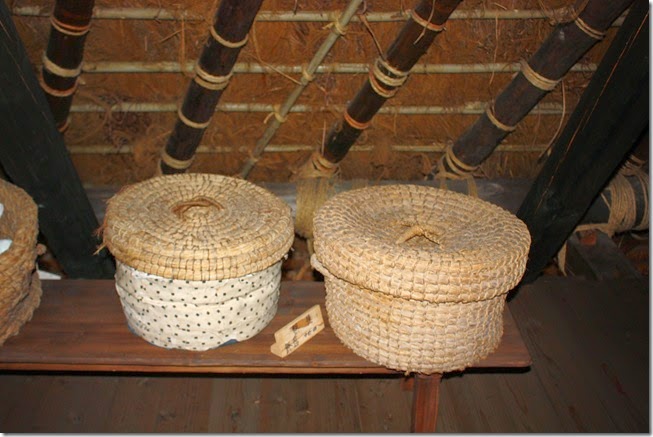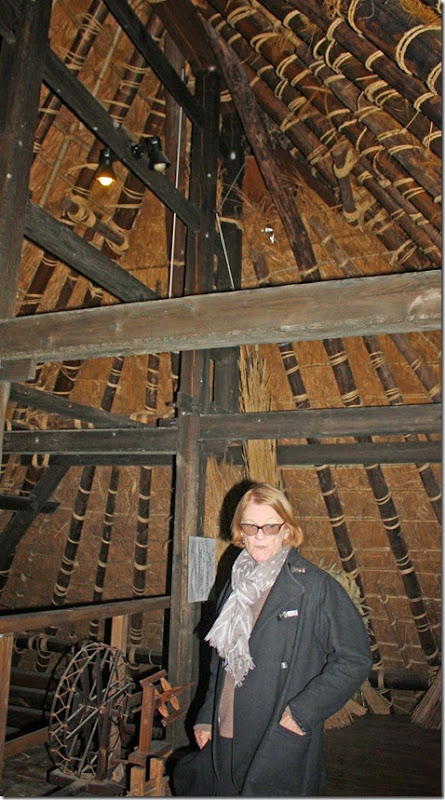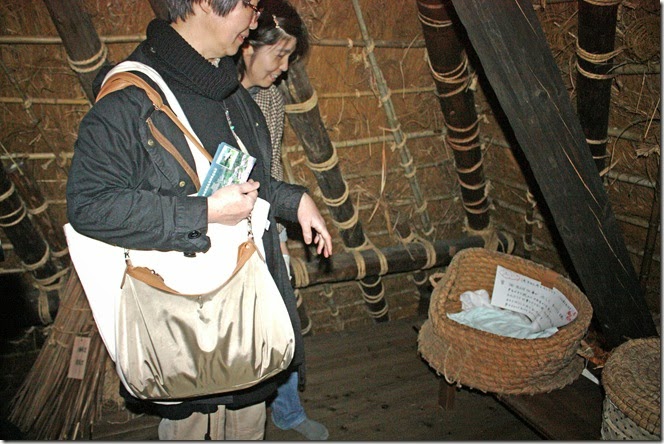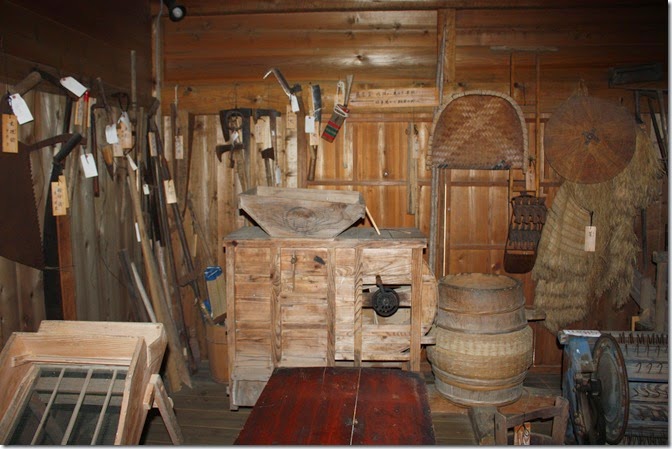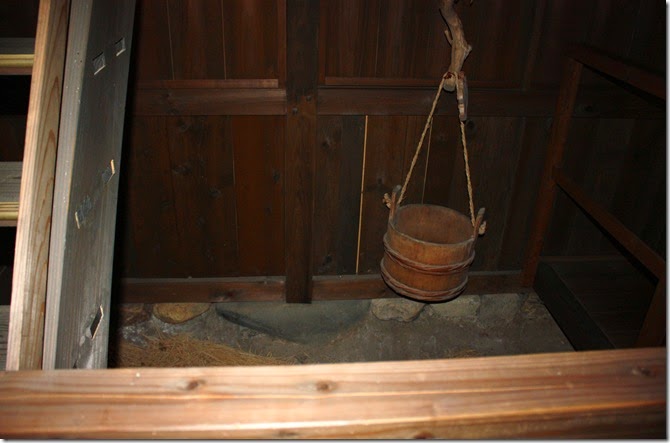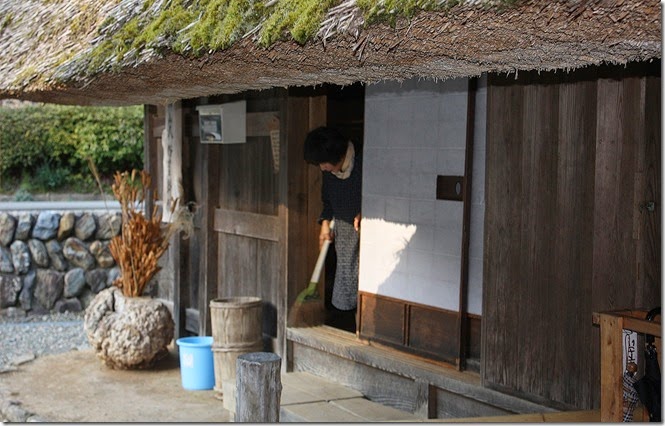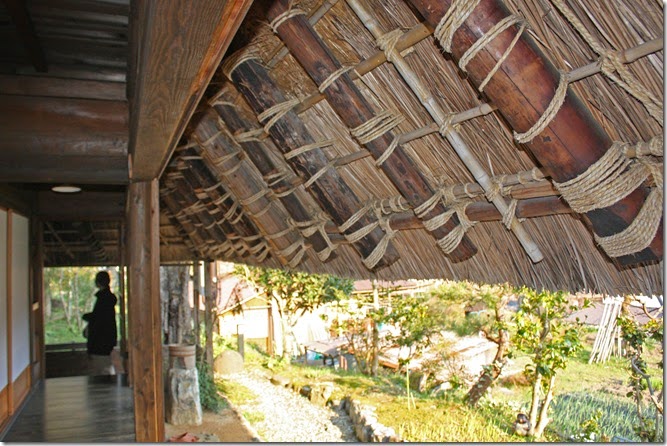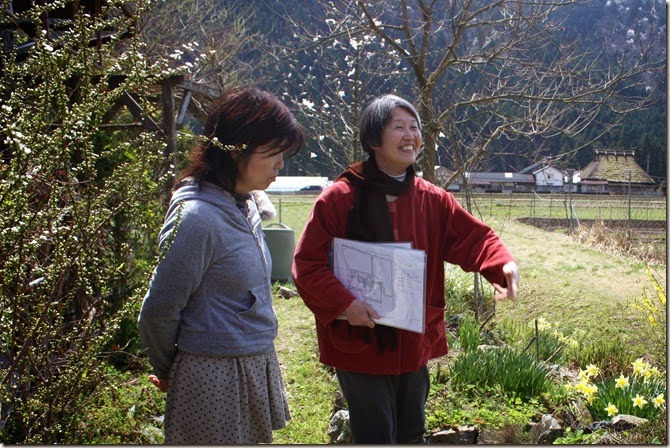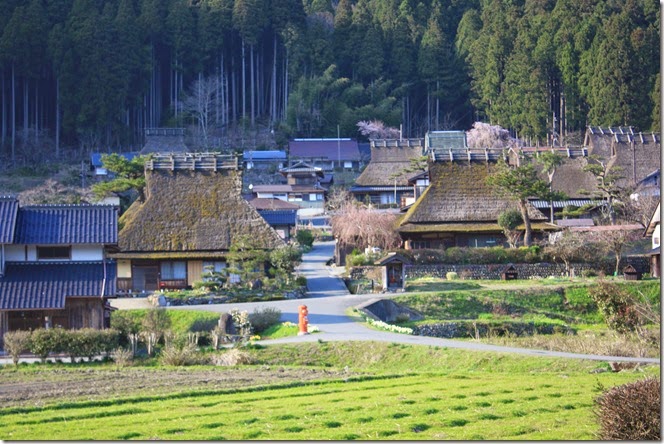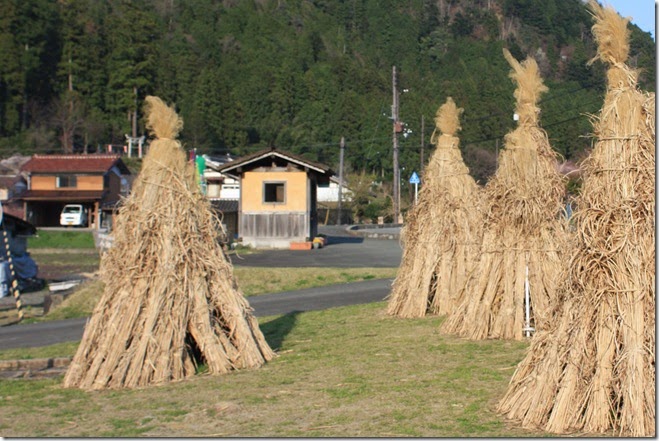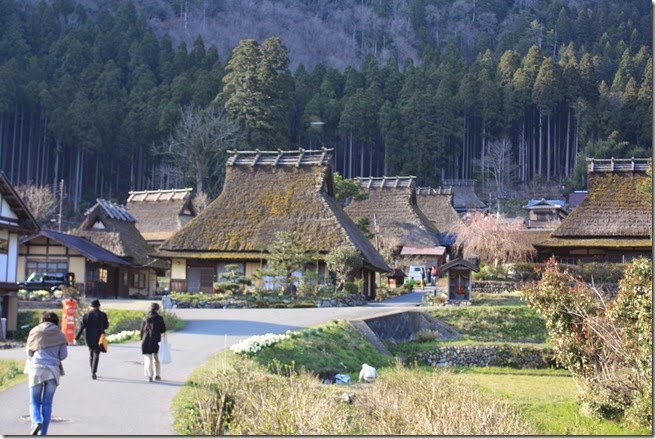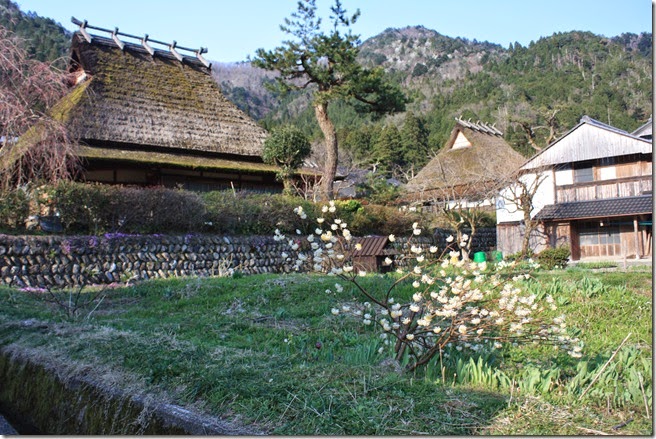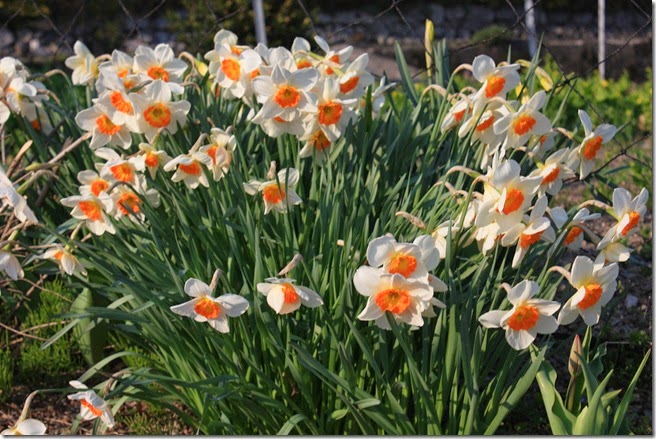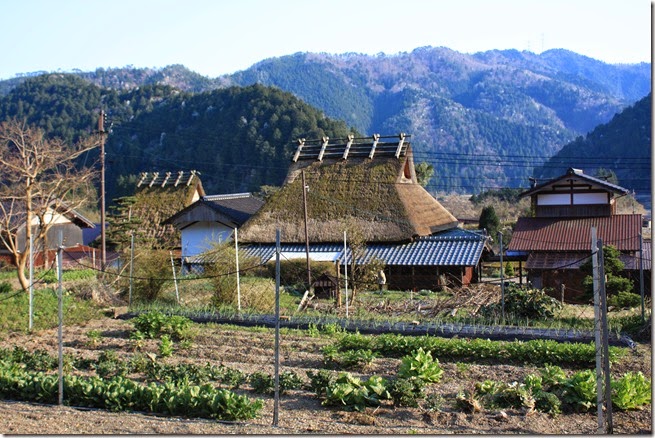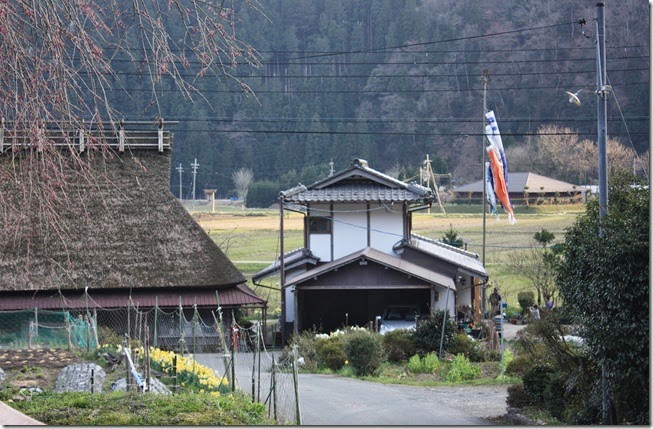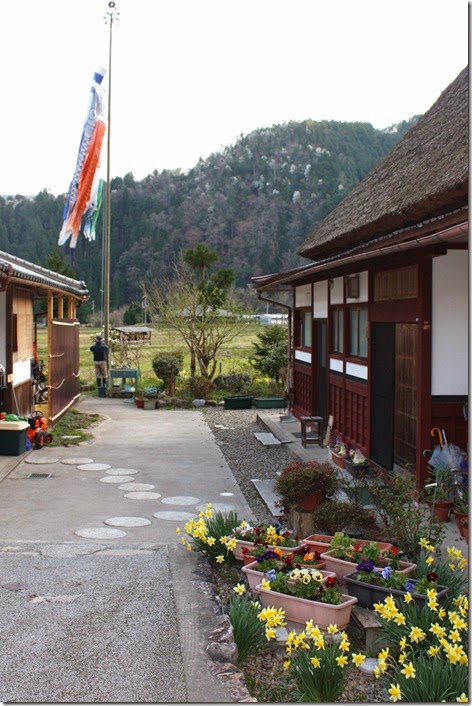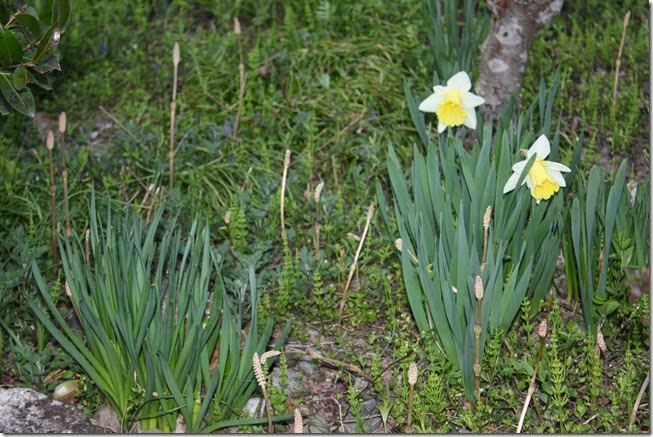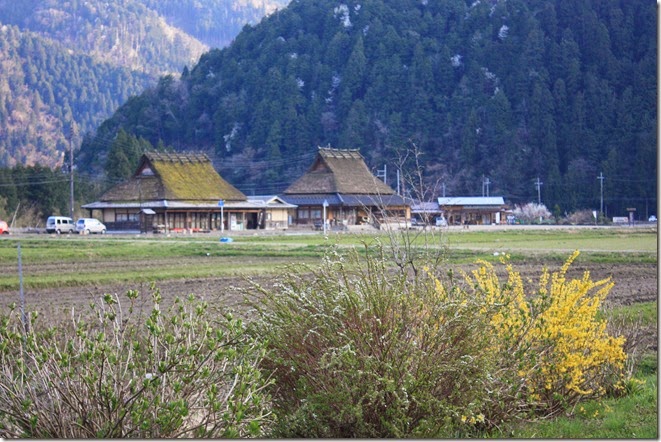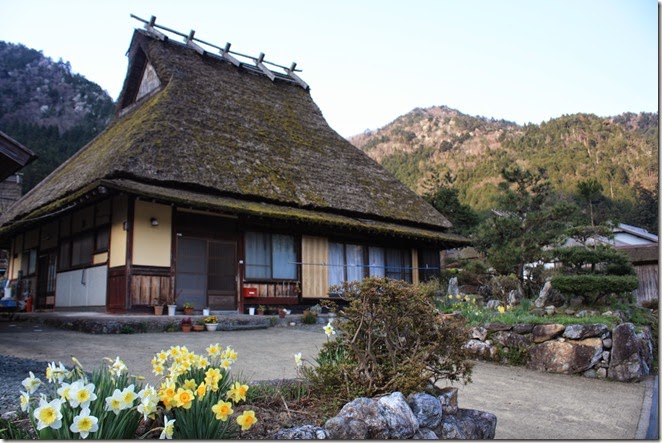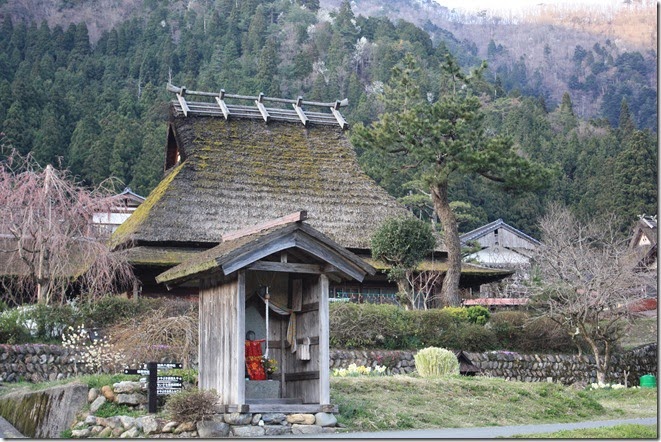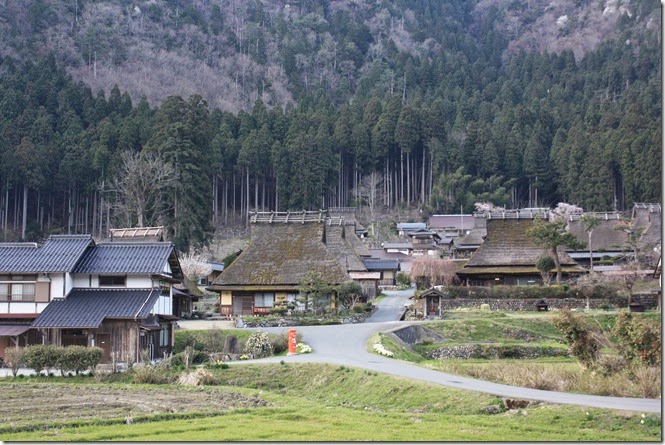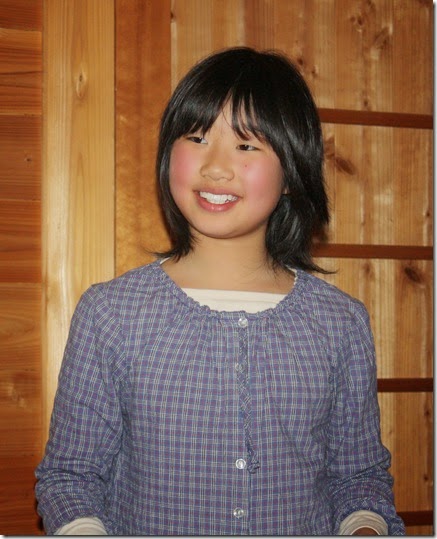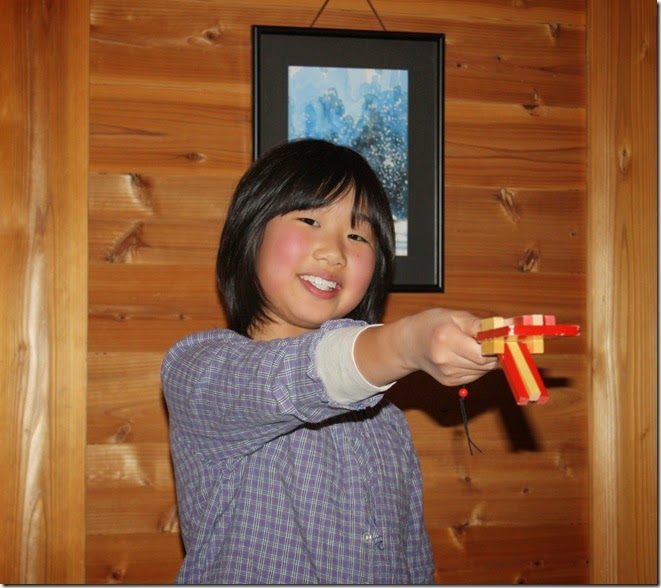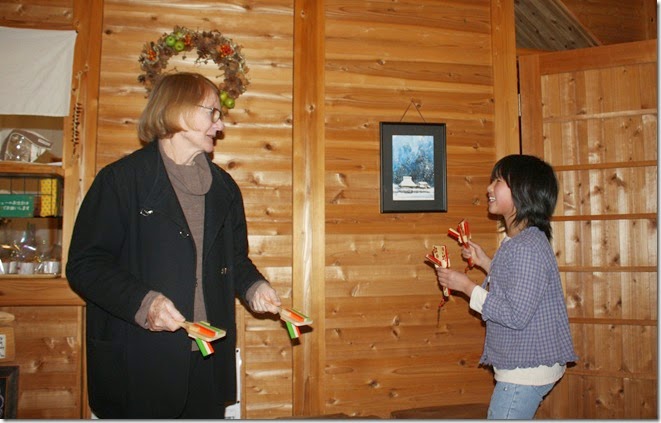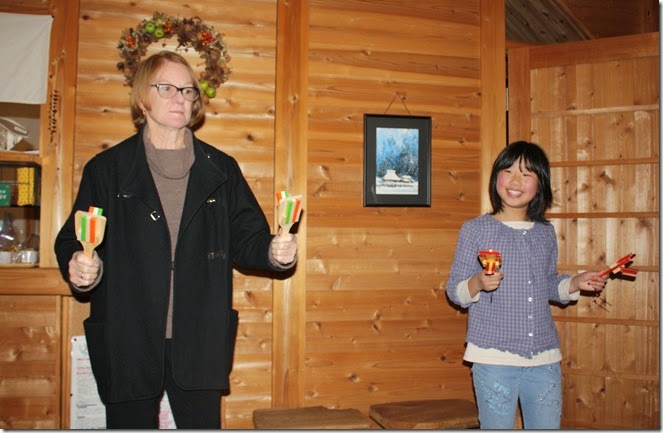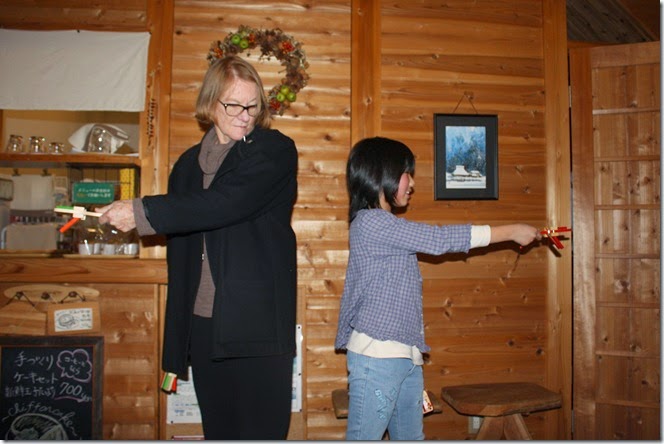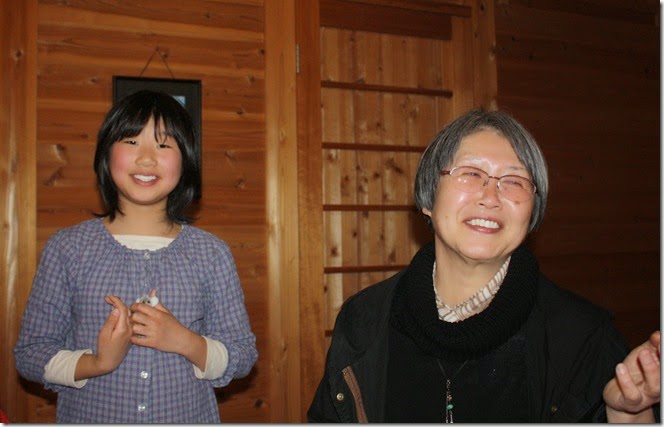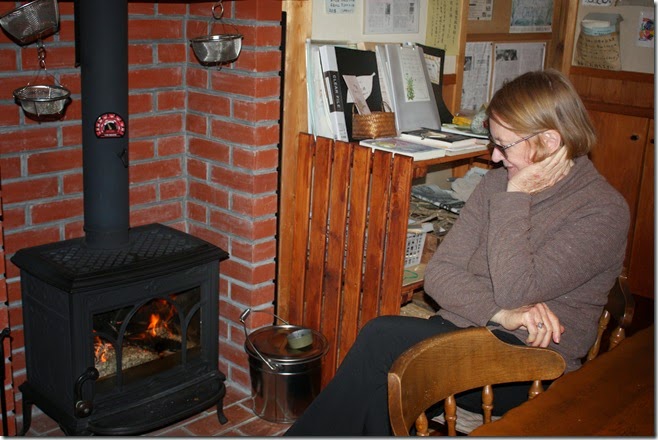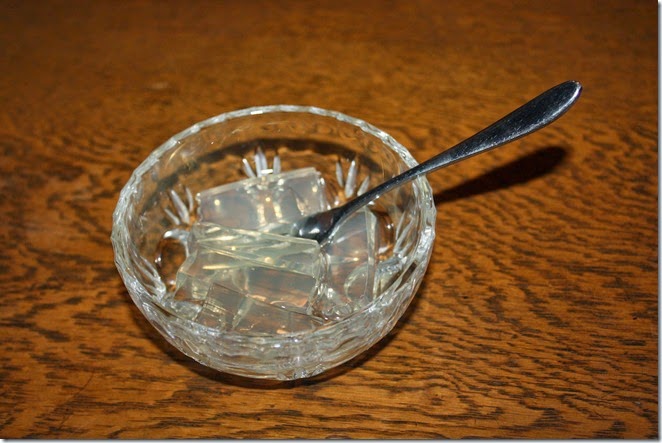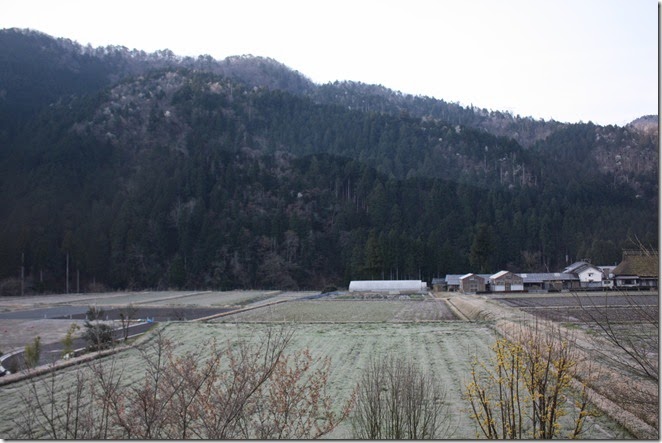
The next morning was quite chilly, with frost on the grass. This is the view from our bedroom window. Over to the left, you can see where the evergreen trees are being planted to screen Chisa’s house from the bus park. I hope the trees grow quickly!
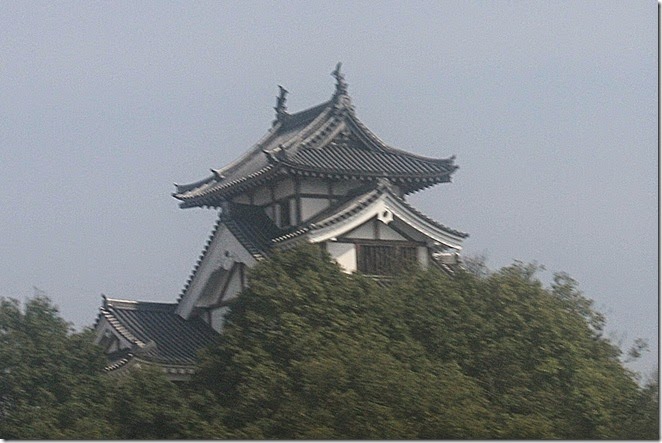
Chisa had gone to an enormous amount of trouble to plan a trip for us. Here is how it started:
Leave home about 9:00 to the nearest JR station Hiyoshi.
Get on JR train at Hiyoshi station.
Change trains at Fukuchiyama station.
Get off at Nodagawa station.
Drive to Refre Kayanosato ( a highly recommended restaurant).
The picture is of Fukuchiyama Castle, seen as we were entering Fukuchiyama. The castle now serves as a local history museum.
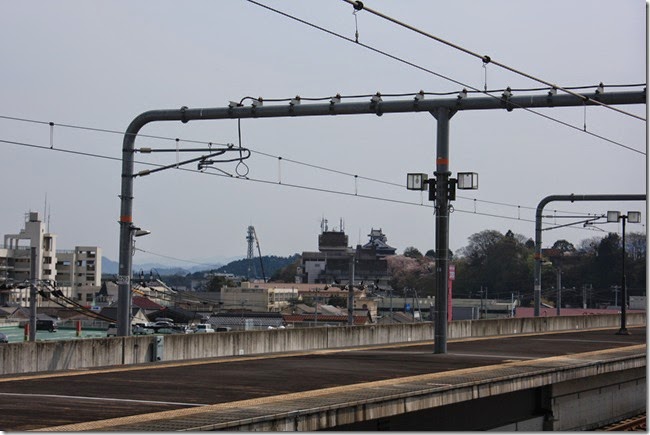
This is how Fukuchiyama Castle looks from the station. Can you see it?
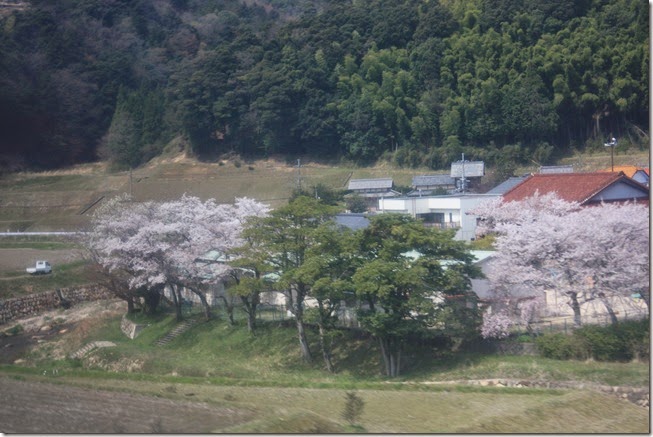
The train passed through some very pretty country between Fukuchiyama and Nodagawa, with cherry blossoms in full bloom.
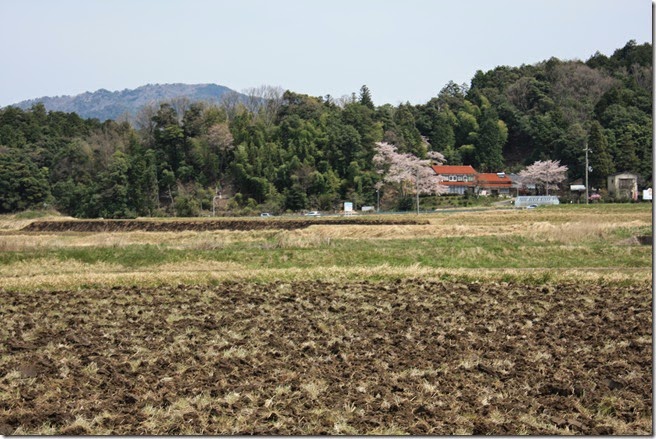
At Nodagawa, we were met by a friend of Chisa’s, who we were meeting for lunch at a special restaurant. We couldn’t all fit in his van, so some of us walked. After sitting in trains for so long, it was very pleasant to walk in the beautiful countryside.
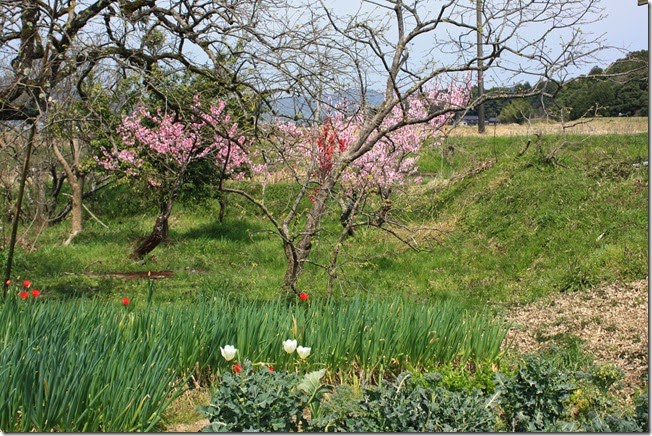
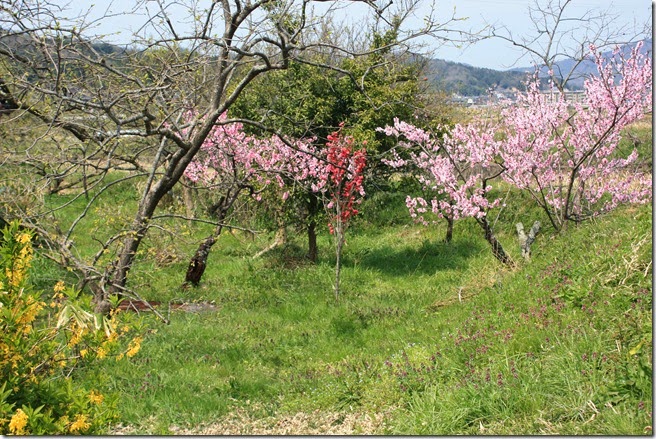
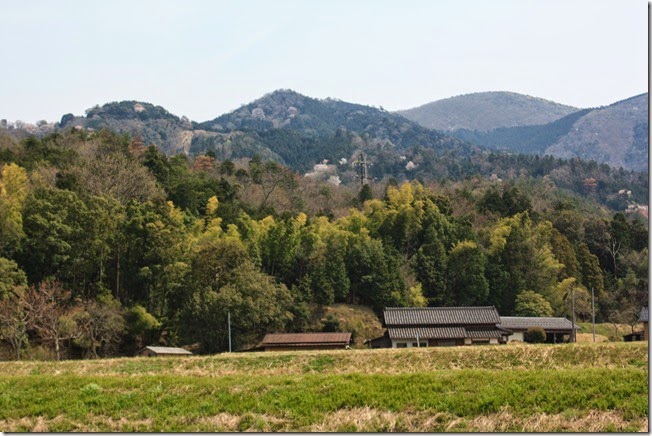
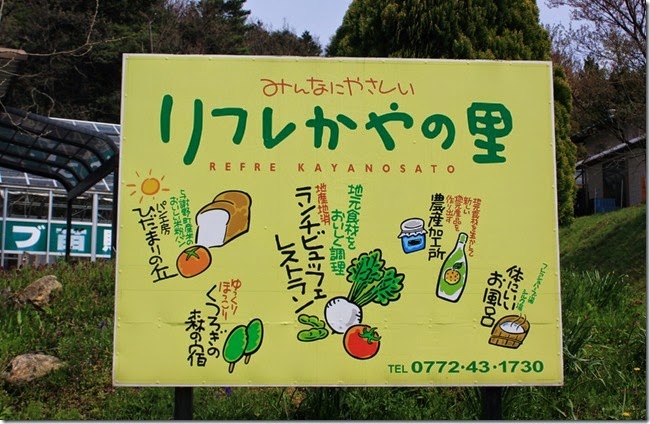
The restaurant was called Refre Kayanosato. In more affluent times, it was a part of a luxury resort. With the coming of the GFC, many of these resorts were forced to close. This one, with a lot of hard work by the local people, has become a centre for the disabled, with the restaurant providing employment and training for them.
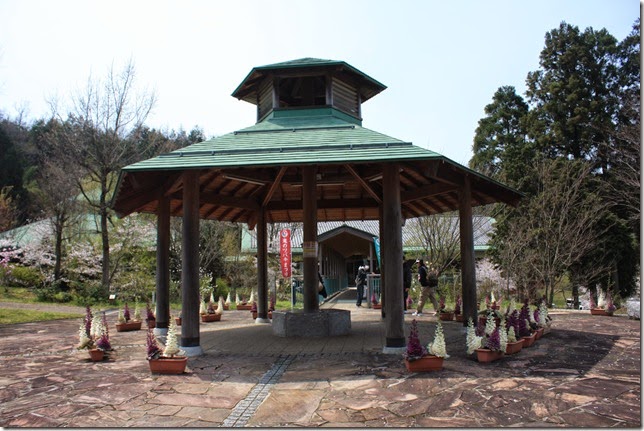
The grounds were very beautiful, and beautifully maintained.
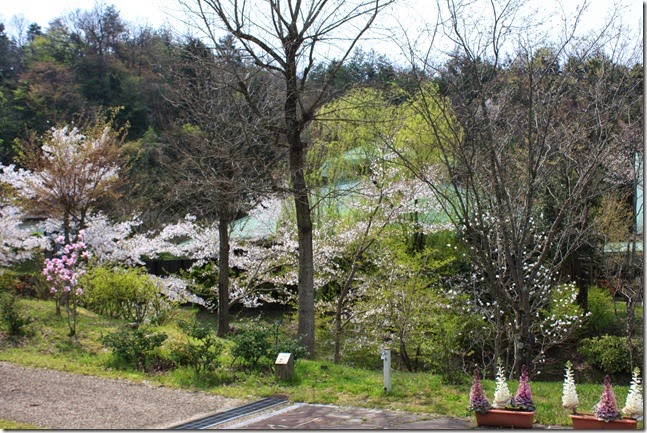
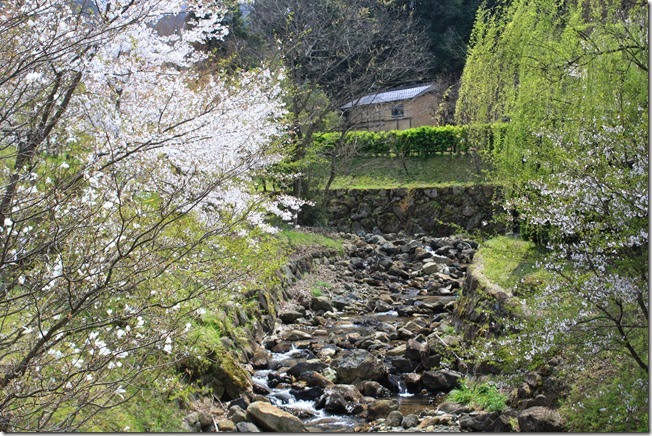
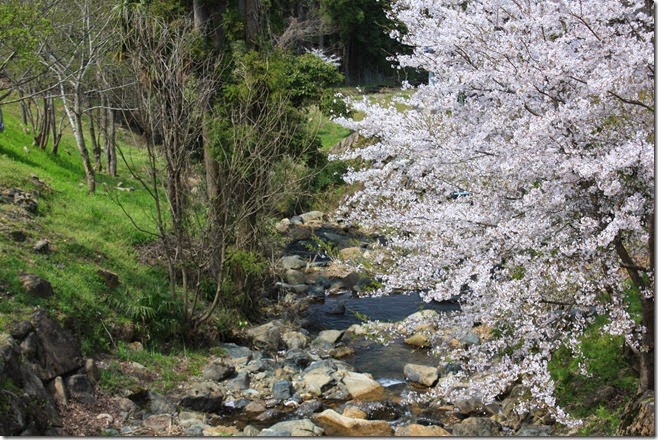
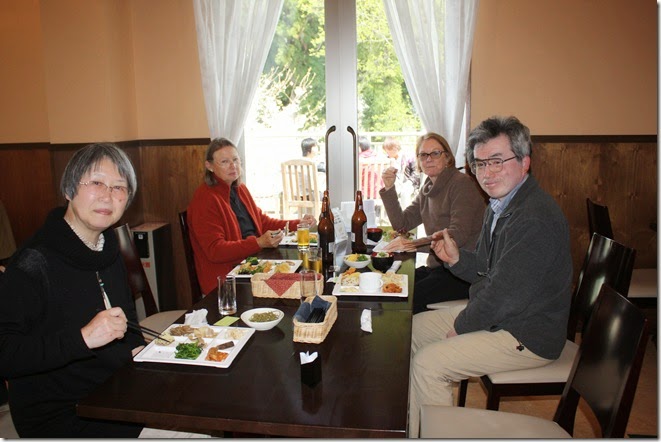
We enjoyed a delicious lunch together.

How’s this for lunch?
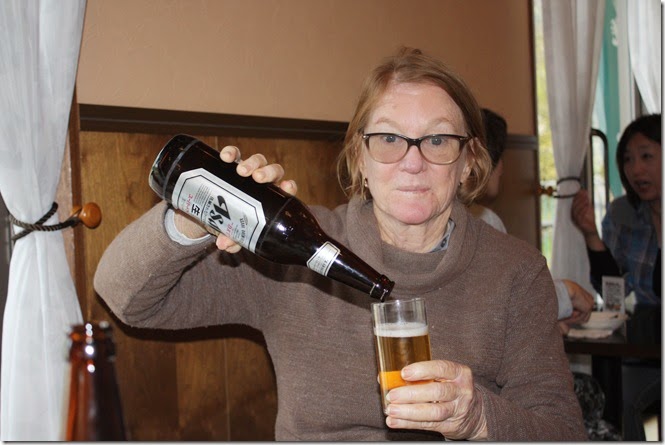
Through a misunderstanding, we ended up with a large beer each, instead of a small beer. What a problem!

Chisa’s friend Mr Moro.
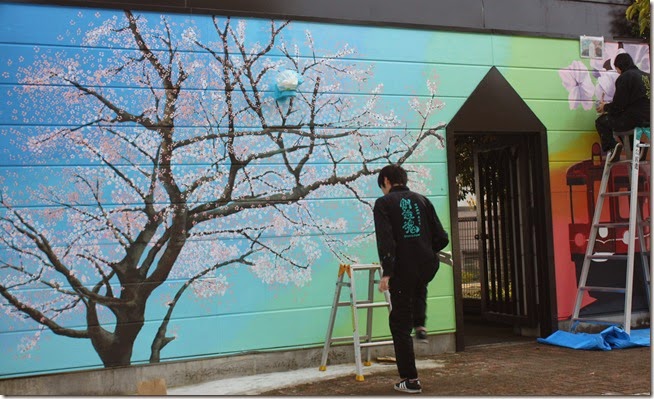
After lunch, we went back to Iwataki station and took a train to Amano Hashidate station, where some students were painting a cherry blossom mural.
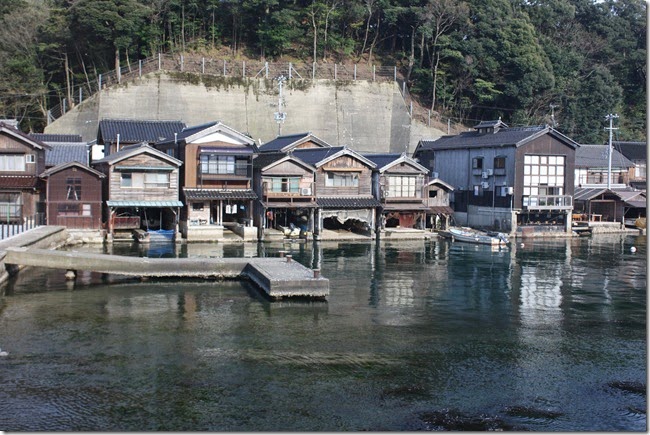
From Amano Hashidate, we took a bus to the coastal village of Ine-cho.
Running along the shore at Ine bay can be found around 230 "Funaya" (houses built on the water's edge with a garage like space for boat mooring beneath). Funaya developed to make maximum use of the narrow strip of land between the mountains and the sea in this locality where the tidal changes are not so great. On the ground floor is a bay for a boat, a place to put equipment, and a workshop. It is here preparations for fishing trips, maintenance of nets, and drying of fish etc. takes place. Upstairs are the living quarters.
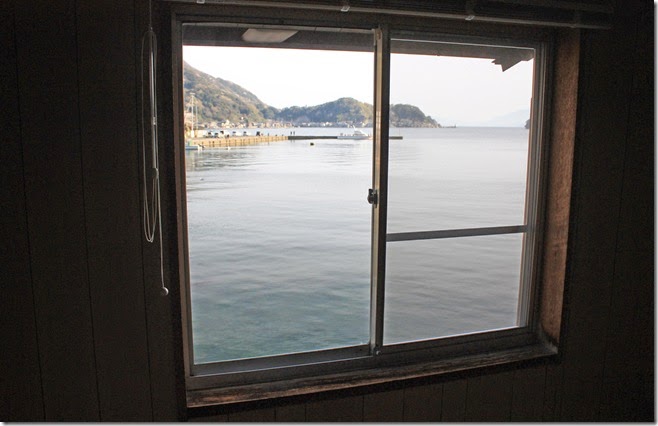
Our accommodation was in a funaya which had been converted into a ryokan. It was absolutely beautiful! Here’s the view out the window.
More pictures of our funaya ryokan: (Yes, we’re back on the floor again.)

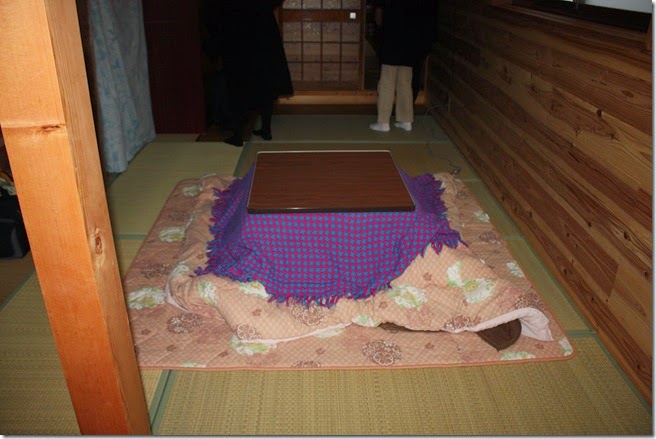
Heater under the table.
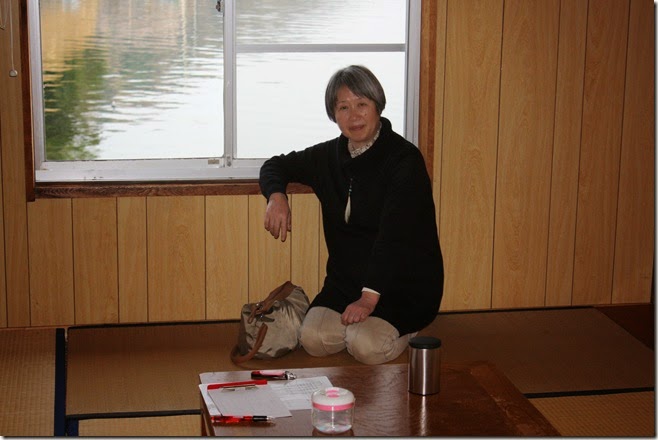
Look how neatly Chisa can sit on the floor! The three of us were so ungainly.
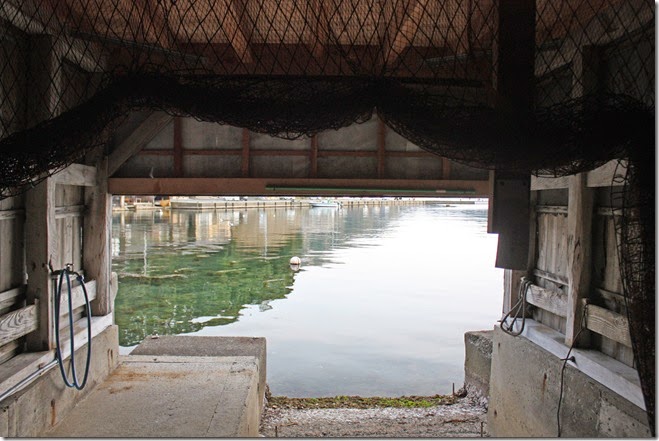
The lower level of our building, where the boat used to be kept.
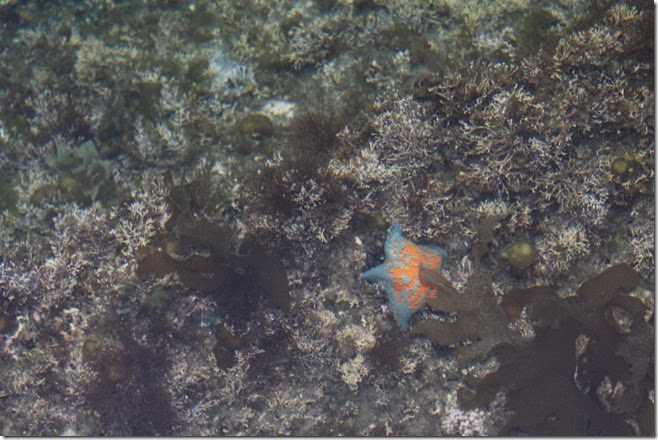
The water was extremely clear, and you could easily see the blue and orange starfish.
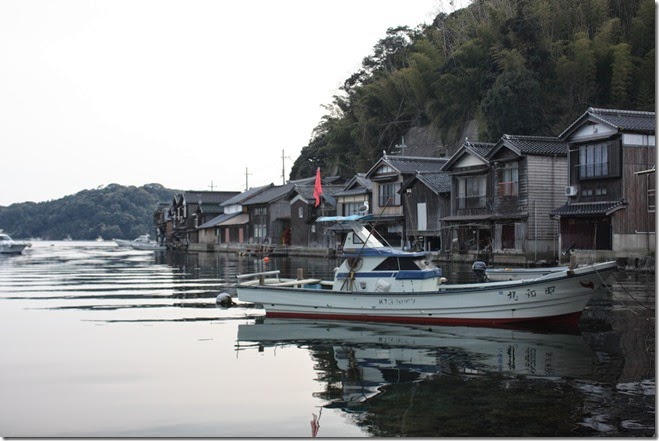
Other funaya around the bay.
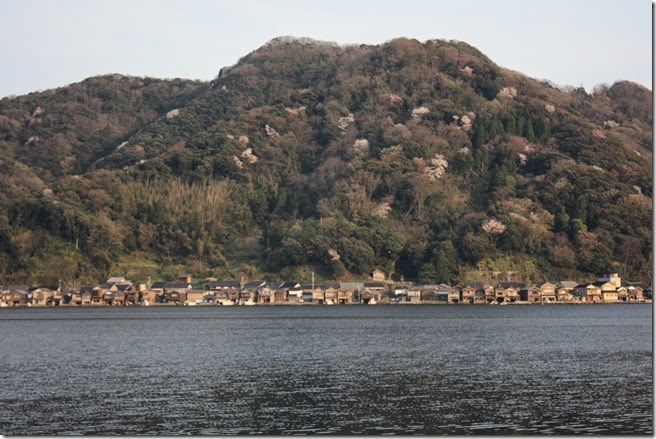
You can see here how the funaya neatly occupy the narrow strip of land along the bay between the sea and the surrounding hills.
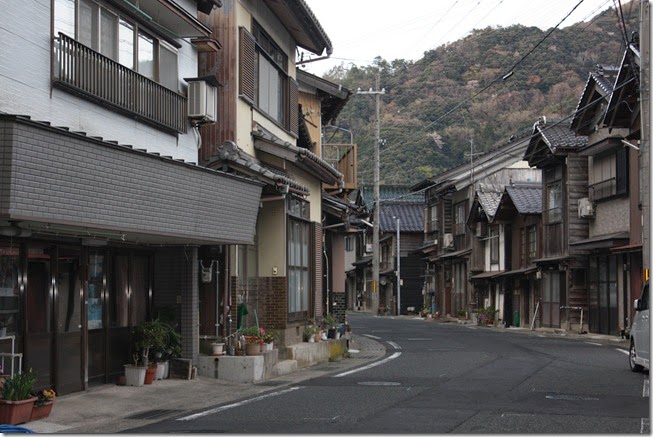
We went for a walk along the street around the bay.
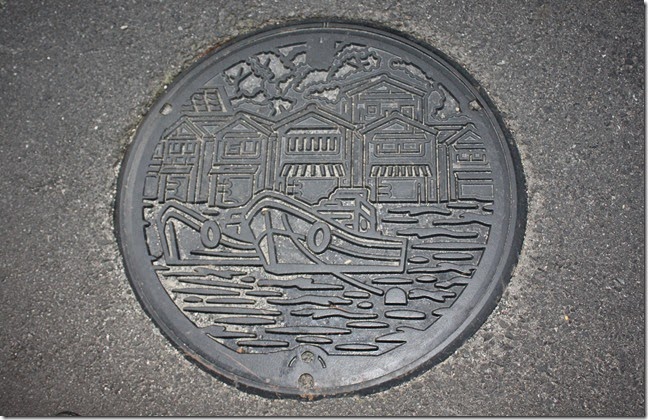
Manhole covers in Ine-cho featured the funaya and boats.
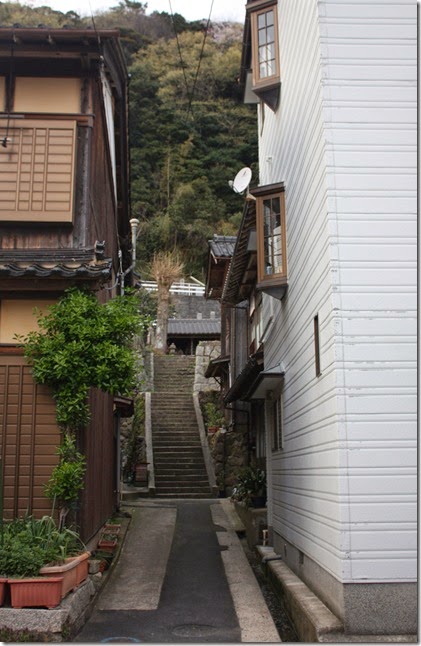
Up the hill.
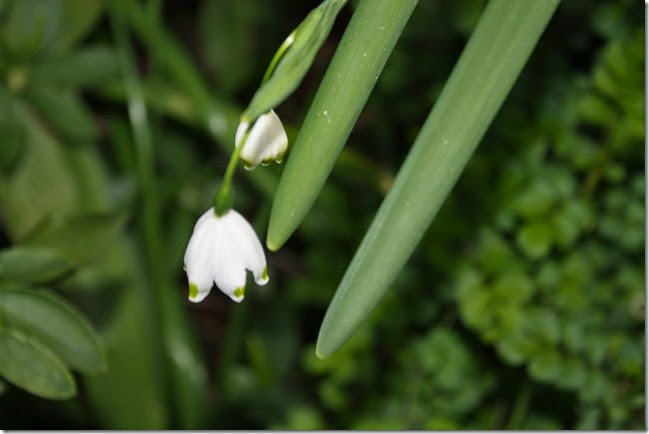
Snowdrop.
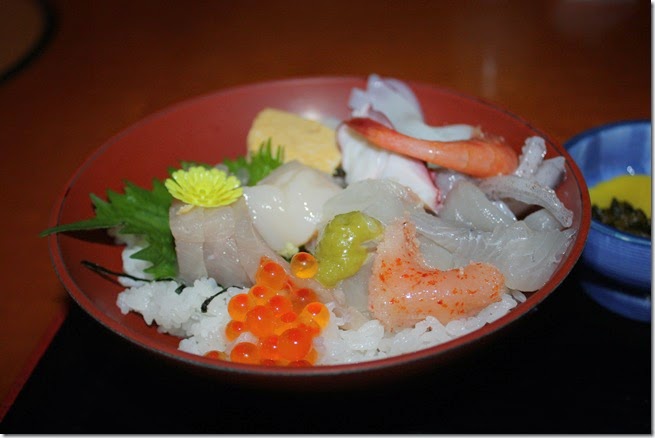
Seafood dinner in a local restaurant. I think it was still wriggling.
Thank you Chisa for a wonderful day.

